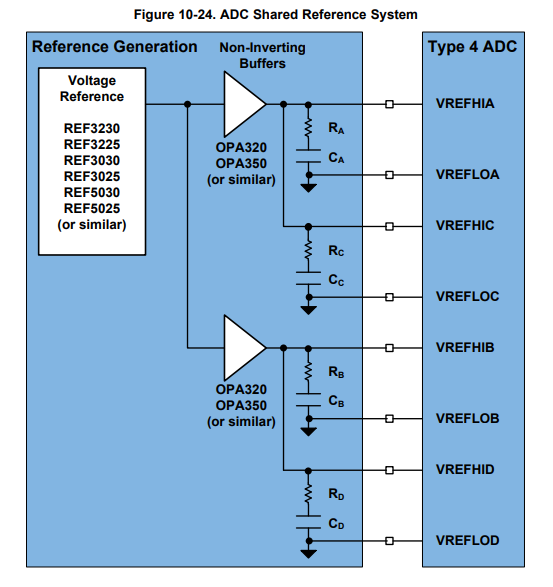Other Parts Discussed in Thread: THS4551, REF3330
Hi,
Can you help with my customer's request below:
There is a requirement for simultaneous sampling of 4 currents (4 pole bridge. Can use 12-bit here).
Also I have General Purpose Analog Input that needs 16-bit resolution.
Based on these two requirements we have chosen 16-bit for all ADCs: A,B,C,D because of that one channel.
We have tight pcb constraints.
What would be minimum signal conditioning circuit to meet ADC requirements (like correct CM).
Can we configure DSP to run all ADC channels in 12-bit mode and switch to 16-bit and back on the fly for that single channel conversion?
Thanks,
Chuchen



